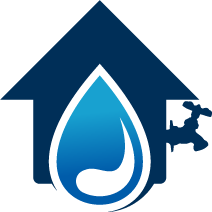Why You Might Experience Reduced Water Output In Your Fixtures
ShareIf your house has low water pressure, you might not enjoy using your water fixtures and appliances. For example, low water pressure means you cannot enjoy luxurious showers or use your washing machines as usual. Below are some common causes of reduced water pressure to help you diagnose such problems.
Clogging
Clogging anywhere along the water's path can restrict water flow. Clogging can occur within water supply pipes, joints, or inside fixtures. For example, when metal pipes corrode, the corrosion clogs the pipes and reduces water flow. Mineral deposits within pipes also cause clogging. In this case, you will experience reduced water flow only on the affected fixtures.
Valve Issues
Plumbers use valves to control water flow to and within different parts of the house. For example, the water meter has a valve that determines how much water flows into the house. If someone accidentally closes the valve or malfunctions, you will experience reduced water flow throughout the house.
In addition, water fixtures inside the house usually have individual valves. Examples include toilets, water heaters, washing machines, and sink valves. Issues with fixture valves only lead to reduced water flow on the relevant fixtures.
Leakage
Reduced water flow is also possible if plumbing pipes or fixtures leak water. For example, if construction damage affects the main water supply line to the house, all the fixtures in your house will experience reduced water flow. Pipe damage within the house can also reduce water flow to specific fixtures.
Aging, pitting due to acidic water, and accidental damage during DIY plumbing work are common causes of water leaks. High water pressure and frozen water can damage pipes, cause leaks, and reduce water output.
Water Supply Issues
Lastly, you may also experience reduced water flow due to issues beyond your control – utility company issues. Say there is a supply problem, and the company cannot meet the water demand in your area. Another example is if something damages the main water line in your area.
In such a case, all the water fixtures and appliances in your house will experience reduced flow. Notify your water company of the problem so they may take relevant remedial measures.
The above are just a few examples of low water flow causes; there are others. The first step to solving low water flow is to diagnose the problem's cause. A professional plumber can help you diagnose and solve the problem so you can enjoy your water as usual.
Contact a residential plumber to learn more.

